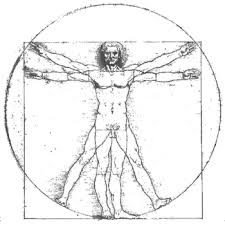As an architect do you sometimes dream that you are the modern day master builder, the renaissance man? Do you see yourself as the one person in charge of every aspect of planning and constructing a modern work of architecture? Is it just like the movies where your creative inspiration and design will lead you to fame and fortune? A word of advice to the wise – keep these dreams a secret if you’re on a construction site.
So what is the role of the architect when it comes to constructing a great work of architecture? In general it can be boiled down to these 3 common responsibilities:
- Represent the owner
- Observe and review the project
- Administer the contract
Represent the Owner
Throughout history this one point hasn’t changed much. There has always been a rich benefactor, industrialist or developer that gives the architect his lucky break. This person is most often referred to as the owner in a contract. The architect, the consultant or owner’s representative (depending on the definition) is the link between the owner and the contractor who builds the project. The architect keeps the owner up to date with regard to progress, payments, and has the authority to act on the owner’s behalf as may be identified in the architect – client (owner) agreement. It is key to understand that the architect depending on the contract
“…is not responsible for and will not have control, charge or supervision of construction means, methods, techniques, sequences or procedures, or for safety precautions and programs, required in connection with the work in accordance the applicable construction safety legislation, other regulations or general construction practise,” excerpt from CCDC Stipulated Price contract (Canadian Construction Documents Committee).
Observe and Review
Vitruvius is famous for asserting in his book De architectura that a structure must exhibit the three qualities of firmitas, utilitas, venustas – that is, it must be solid, useful, beautiful. Observation and review is all about the being solid.
Honed from years of drawing, sketching, designing and analyzing architecture, observation and review is probably the strongest and most natural skill that an architect has. Intimately familiar with his or her design of a building, the architect is in the unique position of having an intuitive understanding of the many layers of decisions, aesthetics, code requirements, materials, and components that make up the design.
This responsibility is to ensure that at the end of the day, the actual construction is generally what was designed and described by the contract drawings and to the quality required by the specifications or as contracts sometimes read in general conformance with.
This is carried out by regular visits to observe and review the construction and progress, and attendance at regular construction site meetings. Observation and review includes the review of shop drawings and submittals, reviewing the progress of construction and schedule, certifying payments, reviewing construction quality requirements as specified, determining substantial performance and final performance of the work.
Administer the Contract
Administering the contract is largely about keeping on top of the paperwork and ensuring that logs, forms, certifications and any correspondence are not only issued but also filed and stored correctly for reference at anytime. It includes replying to requests for information, reviewing and approving proposed change orders, certifying certificates for payment, ensuring general conformance of the construction with the contract documents and interpreting the drawings and specifications, resolving disputes (always keeping in mind that you have to be impartial), reviewing submittals and creating substantial performance and final close out certifications.
At the end of the day, the architect is probably the best one suited to serve as the contract administrator. After all, he or she designed the project, would know the intimate design details and intent, and would usually be in the best position to understand what was the intention of the contract documents. In event of the latter, the architect is also the best suited to identify, correct and minimize the impact of any changes on costs. I guess the architect is a little like a renaissance man, and I am not sure why the movies don’t show architects as contract administrators? That is where the real action is!
Let us know what you think. We welcome any comments or suggestions.
